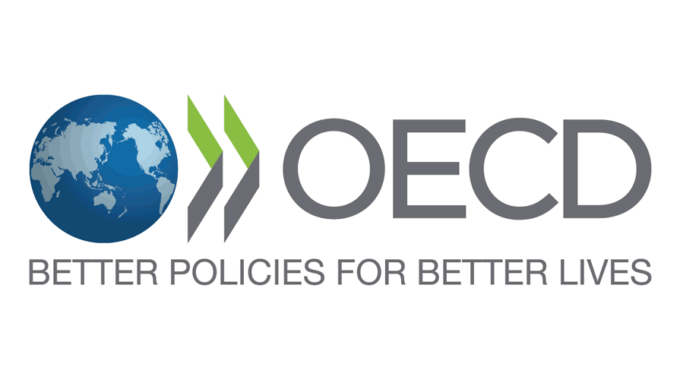
Building Super-Intelligence Hive Minds by Connecting People with AI
The vast majority of research and development in field of AI has been aimed at replacing human intellect with automated algorithms trained using machine learning. While this approach has been successfully applied to large numbers of applications in recent years, there is growing concern that by automating critical decisions, evaluations, and assessments, we gain efficiency at the expense of human judgement, values and sensibilities. This begs the question – can we apply AI technologies in ways that amplify human intelligence rather than replacing it, combining the benefits of software algorithms with the depth of human knowledge, wisdom, insights, and intuitions?
In recent years, new technology called Artificial Swarm Intelligence (or Swarm AI) has demonstrated significant promise in combining the power of AI with the sensibilities of real people in real-time. The core premise of Swarm AI is to turn networked groups of people into super-intelligent “hive minds” that can think together in systems, enabling them to converge on significantly more accurate insights than the individuals could do on their own. Although this sounds like science fiction, Swarm AI is rooted in the biological phenomenon called Swarm Intelligence in which natural populations amplify their collective brainpower by forming real-time systems. Swarm Intelligence is why birds flock, bees swarm, and fish school – they make significantly better decisions by working together in systems.

Published studies have shown that by forming these AI facilitated “hive minds,” networked human groups can produce more accurate predictions, forecasts, decisions and assessments than the individuals could do through traditional methods.1,2,3,4,5 In one recent study, researchers at Oxford University and Unanimous AI tasked groups of financial traders with predicting four economic indicators – the Standard & Poor’s Index (SPX), the price of gold (GLD), the gold miners index (GDX) and the price of crude oil. Across three months of weekly forecasts, results showed a 26% increase in prediction accuracy for swarm-based predictions as compared to individual members (p=0.001).5
In another recent study, researchers at California Polytechnic tasked 60 teams, each of 3 to 6 members, with taking a common Social Intelligence test, both as individuals and as real-time swarms. The teams averaged 68% accuracy when taking the test as individuals alone. Those same teams, when connected by Swarm AI algorithms averaged 85% accuracy, demonstrating a highly significant increase in social intelligence (p=0.001).6 In another recent study, researchers at Unanimous AI tested the ability of groups to converge on optimal solutions, comparing votes to swarms. Results showed that swarming was significantly more effective in enabling groups to reach optimal decisions as compared to three common voting methods: (i) Plurality voting (i) Borda Count ranking, and (iii) Condorcet pairwise voting. While traditional voting converged on optimal solutions with 60% success across a test set of 100 questions, Swarm AI systems converged on optimal solutions with 82% success (p<0.001).7
And most recently, researchers at Stanford University Medical School and Unanimous AI connected small groups of radiologists together over the internet using Swarm AI technology and tested their ability to diagnose chest X-rays as a unified system. Results showed that the “hive mind” of radiologists was significantly more accurate than the individuals on their own, reducing diagnostic errors by 33%. Results also showed that this hybrid approach to AI that combined humans and algorithms was significantly more accurate (22%) than a state-of-the-art software-only solution using deep learning.8
Based on the extremely promising results over the last few years, we believe that significantly more research and development should be focused on connecting people using Swarm AI algorithms rather than replacing people with traditional AI algorithms. We believe this is the safest approach for building super-intelligent systems, as we get the benefit of significantly amplified intellect while at the same keep human values, wisdom, morals, and sensibilities inherent to the underlying process.
- Rosenberg, Louis. “Human Swarms, a real-time method for collective intelligence.” Proceedings of the European Conference on Artificial Life 2015, pp. 658-659
- Rosenberg, Louis. “Artificial Swarm Intelligence vs Human Experts,” Neural Networks (IJCNN), 2016 International Joint Conference on. IEEE.
- Baltaxe, David, Rosenberg, Louis and Pescetelli, Nicollo. “Crowds vs Swarms, a Comparison of Intelligence,” IEEE 2016 Swarm/Human Blended Intelligence (SHBI), Cleveland, OH, 2016, pp. 1-4.
- Baltaxe, David, Rosenberg, Louis and N. Pescetelli, “Amplifying Prediction Accuracy using Human Swarms”, Collective Intelligence 2017. New York, NY ; 2017.
- Rosenberg, Louis, Pescetelli, Nicollo, and Willcox, Gregg. “Human Swarms Amplify Accuracy in Financial Predictions,” IEEE Ubiquitous Computing, Electronics and Mobile Communications Conference (UEMCON), New York, NY. October 2017.
- Willcox, G., Rosenberg, L., Askay, D., Metcalf, L., Harris, E., Amplifying the Social Intelligence of Teams Through Human Swarming, IEEE International Conference on Artificial Intelligence for Industries – August 2018.
- Willcox, Gregg and Rosenberg, Louis “Artificial Swarms find Social Optima” 2018 IEEE Conference on Cognitive and Computational Aspects of Situation Management (CogSIMA), Boston, MA, 2018, pp. 174-178
- Rosenberg, L, Willcox, G., Halabi, S., Lungren, M, Baltaxe, D. and Lyons, M. “Artificial Swarm Intelligence employed to Amplify Diagnostic Accuracy in Radiology,” 2018 IEEE 9th Annual Information Technology, Electronics and Mobile Communication Conference (IEMCON), Vancouver, BC, 2018 (Nov 2-4).
About Unanimous AI:
Unanimous AI is a Silicon Valley company that has pioneered Swarm AI® technology, a new form of AI that combines real-time human insights and AI algorithms modeled after natural swarms. In 2018, Swarm AI technology won “AI Innovation of the Year” at the SXSW Innovation Awards. For more on Unanimous, visit http://unanimous.ai
Want to learn more about our Swarm AI technology? Check out our TED talk below…


